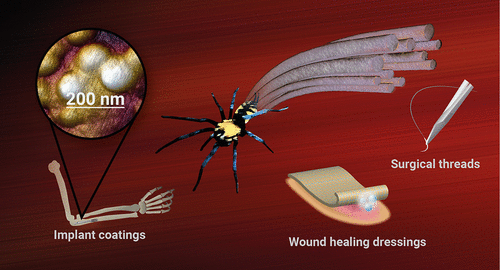Authors: Kiseleva A.P., Nestor G., Östman J.R., Kryuchkova A.V., Savin A.M., Krivoshapkin P.V., Krivoshapkina E.F., Seisenbaeva G.A., Kessler V.G.

Abstract
Linothele fallax (Mello-Leitão) (L. fallax) spider web, a potentially attractive tissue engineering material, was investigated using quantitative peak force measurement atomic force microscopy and scanning electron microscopy with energy dispersive spectroscopy both in its natural state and after treatment with solvents of different protein affinities, namely, water, ethanol, and dimethyl sulfoxide (DMSO). Native L. fallax silk threads are densely covered by globular objects, which constitute their inseparable parts. Depending on the solvent, treating L. fallax modifies its appearance. In the case of water and ethanol, the changes are minor. In contrast, DMSO practically removes the globules and fuses the threads into dense bands. Moreover, the solvent treatment influences the chemistry of the threads’ surface, changing their adhesive and, therefore, biocompatibility and cell adhesion properties. On the other hand, the solvent-treated web materials’ contact effect on different types of biological matter differs considerably. Protein-rich matter controls humidity better when wrapped in spider silk treated with more hydrophobic solvents. However, carbohydrate plant materials retain more moisture when wrapped in native spider silk. The extracts produced with the solvents were analyzed using nuclear magnetic resonance (NMR) and liquid chromatography–mass spectrometry techniques, revealing unsaturated fatty acids as representative adsorbed species, which may explain the mild antibacterial effect of the spider silk. The extracted metabolites were similar for the different solvents, meaning that the globules were not “dissolved” but “fused into” the threads themselves, being supposedly rolled-in knots of the protein chain.
DOI: 10.1021/acs.biomac.1c00787
Read Full Here:
https://pubs.acs.org/doi/10.1021/acs.biomac.1c00787?ref=pdf&